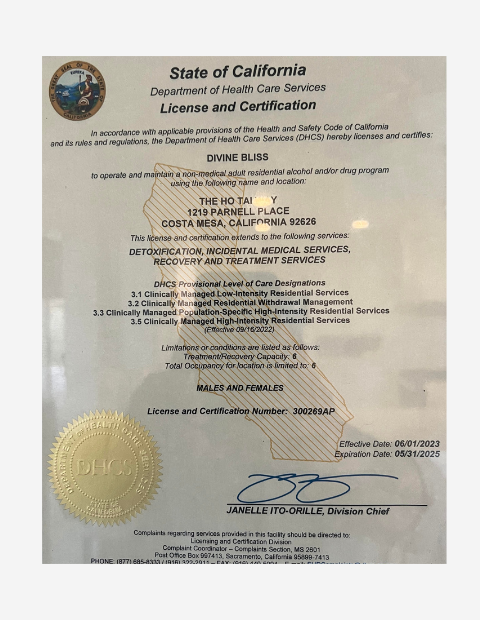Post-traumatic stress disorder (PTSD) is a mental health condition triggered by experiencing or witnessing a terrifying event. Studies show that women are twice as likely to develop PTSD as men and a significant portion of them turn to substance abuse as a coping mechanism.
The experience of trauma and its aftermath varies greatly between individuals, but signs of PTSD in women can manifest in unique and sometimes subtle ways. This often overlooked condition can severely impact the quality of life, relationships, and physical health.
In this article, we’re exploring 10 signs of PTSD in women.
Signs of PTSD in Women
PTSD is not just a condition that affects soldiers or those who have been through obvious life-threatening events. It can impact anyone who has experienced significant emotional or physical trauma.
Here are 10 signs of PTSD in women that may point to the need for professional intervention.
1. Reliving the Event
One of the most poignant signs of PTSD in women is the incessant reliving of the traumatic event, which can manifest in a variety of ways.
This can happen through intrusive thoughts that seem to come out of nowhere, disrupting everyday life. It’s as if the mind is stuck in a loop, replaying the trauma when least expected, making it difficult to focus on tasks or interact socially.
Nightmares are another way in which the event is relived. Women may find it challenging to sleep, or they may wake up in a state of panic, sweating, or even screaming. These nightmares often contain vivid, distressing images related to the trauma, leading to a fear of sleep and subsequent sleep deprivation, which exacerbates the symptoms of PTSD.
Flashbacks are also common, where the person feels like they are back in the moment of the trauma. During a flashback, it’s difficult to distinguish between past and present, and the fear, smells, and sounds of the traumatic event can feel overwhelmingly real.
This extreme form of reliving the event can lead to panic attacks and should be treated immediately.
2. Avoidance
Avoidance is another critical sign of PTSD, particularly in women. People who suffer from PTSD often go out of their way to avoid any reminders of the traumatic event.
This can include avoiding specific places, refusing to watch certain movies, or even avoiding social interactions that might trigger memories of the traumatic event. This avoidance can make it difficult to lead a normal life and result in a shrinking world for the sufferer.
Over time, the avoidance behavior can escalate, making it increasingly challenging to function in daily life.
This can manifest as a decline in performance at work, or the deterioration of social and family relationships. The avoidance also extends to conversations – many women find it extremely uncomfortable to talk about the trauma they’ve experienced, further isolating them from their support systems.
The avoidance isn’t merely about steering clear of physical reminders – it’s also about avoiding emotional pain.
However, avoidance is a coping mechanism that ultimately doesn’t help to process the trauma. In fact, it can make the symptoms of PTSD worse over time, making professional help a necessity for effective coping and healing.
3. Hyperarousal
Hyperarousal can be one of the more physically exhausting signs of PTSD in women. Women with PTSD often describe feeling “on edge” or “keyed up.”
They may be overly alert, constantly scanning their environment for potential threats, even in situations where there is no danger. This heightened state of alertness can be mentally draining and lead to fatigue or even burnout over time.
Physical symptoms often accompany hyperarousal, such as an increased heart rate, sweating, and even shaking. Because the body is in a state of high alert, it’s prepared to either fight or flee, leading to an adrenaline rush that can cause these physical symptoms. This state is not sustainable and can lead to further health complications if not addressed.
Hyperarousal can also manifest as irritability and even episodes of rage. Relationships may suffer as a result, and it can also interfere with job performance.
Some women may find themselves startled easily, reacting excessively to small surprises or loud noises. All these elements contribute to a lower quality of life and should be addressed through professional help.
4. Emotional Numbness
Emotional numbness can be one of the more elusive signs of PTSD in women. It manifests as a kind of emotional flatlining, where a woman feels disconnected from emotions, both her own and those of people around her.
This emotional detachment serves as a protective mechanism to avoid the pain or overwhelming emotions related to the traumatic event.
This numbness isn’t limited to feelings related to the traumatic event – it often extends to all aspects of life. Simple pleasures that once brought joy no longer have the same effect, and even in situations that would typically elicit strong emotional responses—like a birth or a wedding—the person may feel disconnected or even indifferent.
However, this emotional numbness can be particularly harmful. Not only does it affect the individual’s well-being, but it can also strain relationships with loved ones who may feel rejected or unloved due to this emotional withdrawal.
Emotional numbness doesn’t make the trauma go away. Instead, emotional numbness creates a new set of problems that also need to be addressed.
Reconnecting with emotions is a critical part of the healing process, often requiring professional intervention.
5. Guilt and Shame
Guilt and shame are complex emotional states that often surface as significant signs of PTSD in women. Survivors may blame themselves for the traumatic event, even when it’s clear that they were not at fault.
This self-blame is not only misplaced but can also be crippling, hindering the person’s ability to seek help and complicating the recovery process.
This internal struggle with guilt and shame can manifest in various ways—avoiding friends and family, withdrawing from social activities, or refusing to engage in conversations about the trauma. The burden of guilt can also lead to mental health issues such as depression and anxiety, exacerbating the effects of PTSD.
It’s important to address these feelings through therapeutic interventions, as they can be substantial barriers to recovery. Guilt and shame can make a person feel isolated and unworthy of help, but acknowledging these emotions and working through them is a crucial step towards healing and should not be overlooked.
6. Difficulties in Relationships
Strained interpersonal relationships are another hallmark among the signs of PTSD in women. The effects of trauma often don’t exist in a vacuum – they spill over into the survivor’s interactions with family, friends, and romantic partners. Trust issues frequently arise, as the individual may become overly suspicious or guarded, making emotional intimacy a challenge.
Communication often becomes a significant hurdle in relationships, as the individual might find it difficult to express what they’re feeling or going through. They may either shut down emotionally or become overly critical and irritable. As a result, loved ones may feel pushed away, not understanding how to provide the right support.
Recognizing that PTSD symptoms can wreak havoc on personal relationships is essential for both the survivor and their loved ones. Relationship therapy, both individually and with partners or family members, can provide tools to improve communication and rebuild trust, which are vital steps toward recovery.
7. Self-destructive Behavior
One of the more alarming signs of PTSD in women is a pattern of self-destructive behavior. This can manifest in various forms, such as substance abuse, reckless driving, or engaging in risky sexual behavior. These acts serve as a misguided form of coping, a way to divert attention away from the emotional pain caused by the trauma.
In the short term, such behavior might offer temporary relief from the symptoms of PTSD, but it comes at a high cost. These actions often lead to further physical harm, potential legal issues, and even more emotional pain.
Addressing self-destructive behavior is imperative for a successful recovery from PTSD.
If you find yourself turning to substances to cope with PTSD, you may be interested in exploring the benefits of joining a recovery program for women, like The Ho Tai Way, which provides the therapy needed to develop healthier coping mechanisms and break the cycle of self-destructive actions.
8. Sensitivity to Triggers
Women with PTSD often find themselves hypersensitive to triggers that remind them of their traumatic event.
These triggers can be anything—a smell, a sound, a specific location, or even a person. When confronted with such a trigger, they might experience intense emotional or even physical reactions, such as panic attacks or flashbacks.
Managing these triggers can become a daunting task, requiring constant vigilance and leading to increased stress and anxiety. Avoiding these triggers can also result in restrictive behaviors, further isolating the individual and limiting their life experiences.
Understanding one’s triggers and learning how to cope with them are critical steps in the treatment of PTSD. Professional help can provide the tools needed to navigate these challenges, enabling the person to regain some sense of normalcy and control over their life.
9. Cognitive Issues
PTSD doesn’t just manifest through emotional symptoms – it can also lead to cognitive issues. These can include memory lapses, trouble concentrating, and difficulties in making decisions. Such symptoms can affect daily tasks like work performance, studying, and even routine decision-making, adding another layer of complications to life post-trauma.
The cognitive challenges often exacerbate other PTSD symptoms. For instance, difficulties in concentration can make a person more susceptible to triggers and flashbacks. Moreover, cognitive issues can contribute to feelings of inadequacy and frustration, impacting self-esteem and making the path to recovery more complex.
Addressing cognitive issues often involves a multi-faceted approach, which may include cognitive-behavioral therapy (CBT) and medication. Being aware of these issues and seeking help is vital for full recovery and improved quality of life.
10. Physical Symptoms
Last but not least, physical symptoms often accompany PTSD, though they may not be immediately attributed to it. Women with PTSD may experience chronic fatigue, headaches, stomach issues, or muscle tension.
These symptoms are not merely “in the head” – they are often bodily manifestations of the mental and emotional stress that comes with PTSD.
Physical symptoms can create a vicious cycle … the discomfort exacerbates stress, which in turn worsens the PTSD symptoms, creating a loop that’s hard to break. Moreover, these physical issues can affect daily life, from job performance to personal relationships, further complicating the recovery process.
Addressing these physical symptoms usually requires a holistic treatment approach, involving both psychological therapy and medical interventions.
Recognizing that these symptoms are part of the broader PTSD picture is the first step towards effective treatment and a more comprehensive recovery.
Explore Trauma-Informed Therapy at The Ho Tai Way
If you’ve identified with any of these signs of PTSD and are looking for effective, compassionate treatment, then you’ve come to the right place.
At The Ho Tai Way, we specialize in trauma-informed therapy that addresses both PTSD and substance abuse issues in women.
Imagine a life where you don’t have to be constantly on guard, where you can build healthy relationships and have control over your life.
Take the first step to reclaim your life now by joining our residential treatment program designed explicitly for women pursuing recovery from substance abuse and PTSD.
Conclusion
Women are twice as likely to experience PTSD. Signs of PTSD include unwanted or intrusive thoughts, flashbacks, sudden memory losses, cognitive problems, and a feeling of general or overwhelming anxiety. People with PTSD are also more likely to react emotionally and physically to stimuli and are more easily startled after trauma.
PTSD can be treated. There are specialized therapy programs and techniques refined to help people after a traumatic experience. While there is no medication to treat PTSD, certain medications can help alleviate the symptoms of co-occurring disorders, such as depression. If you or someone you love is struggling with PTSD as a woman, know that you aren’t alone. We have the tools to help. Get in touch with us today at The Ho Tai Way.









